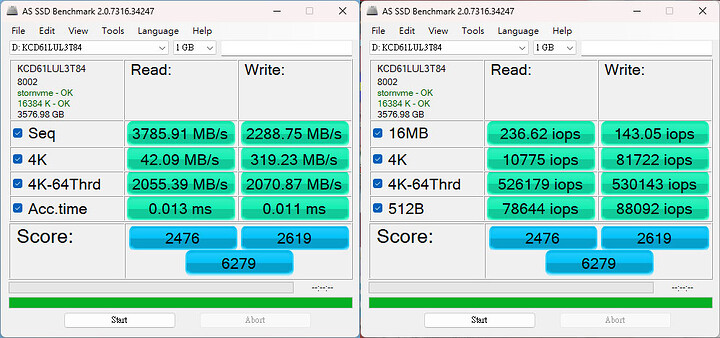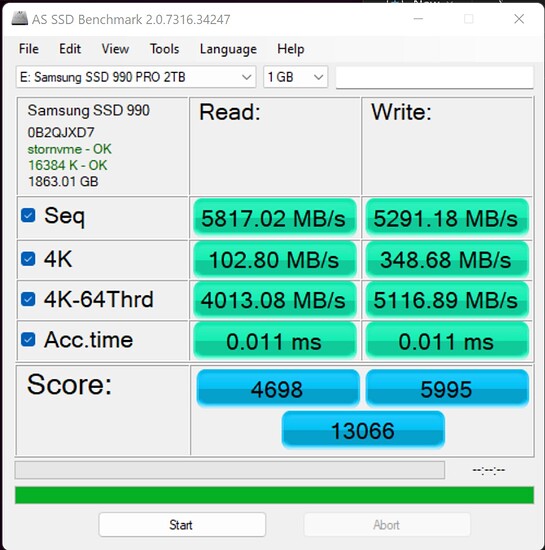TLDR: Enteprise ssds outside optane and pSLC specialty models will not perform significantly better than average consumer drive. Will likely perform worse than top of line consumer models. Nearly impossible to get hard proof though.
TLDR2: Even speciality Z-NAND drive is not uniformly superior to top of line m.2 consumer product for the same price (new. vs second hand). To get +80% RR, you will have to sacrifice 30% RR@64T and 50% SEQ.
I have been trying to answer the same question as OP to myself, but there is almost no available data. Just indirect hints from other sources and random blog posts from enthusiasts that buy them second hand for shit and giggles.
So let me dust off my onenote scratchpad, and regurgitate what I found over the last year of poking around.
There are few specialized review sites that do enterprise grade products, but the reviews are tailored to domain experts and system integrators.
Random read at low queue depth is irrelevant metric in that area, since enterprise workload is almost never limited by that.
In rare occasions it is, its not something normal enterprise models are suited for, and its serviced by extremely specialized optane or Z-NAND/XL-FLASH nand products from samsung/micron.
What is important in this area is:
- performance at heavy concurrent load
- latency depending on increasing concurrent load
- sustained performance levels depending on increasing concurrent load (hours+, not minutes like consumer products)
- durability (not explicitly tested), DPWD levels
- overall reliability under any operating conditions (not tested)
On design side this is achieved by:
- increased levels of nand channels, increasing performance by leveraging parallelism
- this is direct opposite of consumer sector due to cost increases
- high or obscene nand overprovisioning (sandwich boards are not rare in high capacity models)
- unknown controller differences and certification
- pausing work to perform garbage collection is not permissible on device that is hammered by request 24/7 for example
- nvme zoning and QoS support
- dedicated ram or nvram write buffers (I’ve seen one product with small PCM cache even)
- internal capacitors in case of power loss to safely flush data to nand
- certified and well though early error detection and error handling
- enteprise drive will rather offline itself early that risk mangling data, second hand shoppers are sometimes bit by this behaviour. Absolutely okay if you running an array and have spare ready, but massive headache for home user.
None of this, beyond increased amount of nand channels is capable of increasing random RW at low que depths.
I had found only one indicative benchmark for KIOXIA CD6-R U.3 Gen4 NVMe 3.84T SSD.
Results are much worse than you would expect, notice 4K value:
Lets compare it to normal high end consumer M.2 samsung 990 PRO:
So I would summarize my personal finding as:
“The highest end enterprise drive used in a gaming computer would feel night and day different” does not hold water outside few very special cases.
Why?
Desktop workload and enterprise workload do not meaningfully overlap and products in each segment are optimized for segment (duh  ).
).
While enterprise hardware is generally much more powerful, durable and stable, its not optimized at all for desktop use. Also the same performance constraints that limit consumer products are present here as well.
Its very nice to get them second hand, but if you want performance, you are looking in wrong space.
There are specialized enterprise products that could fill this desire, specifically the original products created to combat optane while it still existed as competition.
They are extremely hard to get and were extremely pricy. Most were not sold directly to anyone but OEMs.
Price was accordingly published as call us or no data available.
If you, dear reader, are interested in going into that rabbit hole, look for Z-NAND second gen product SAMSUNG SZ1735. One performance fiend bough recycled unit and tested in on LTT forum. Behold:
While original asking price for this unit was somewhere at least north of 3800 USD (todays price), it can be bought now on ebay for 400 USD.




